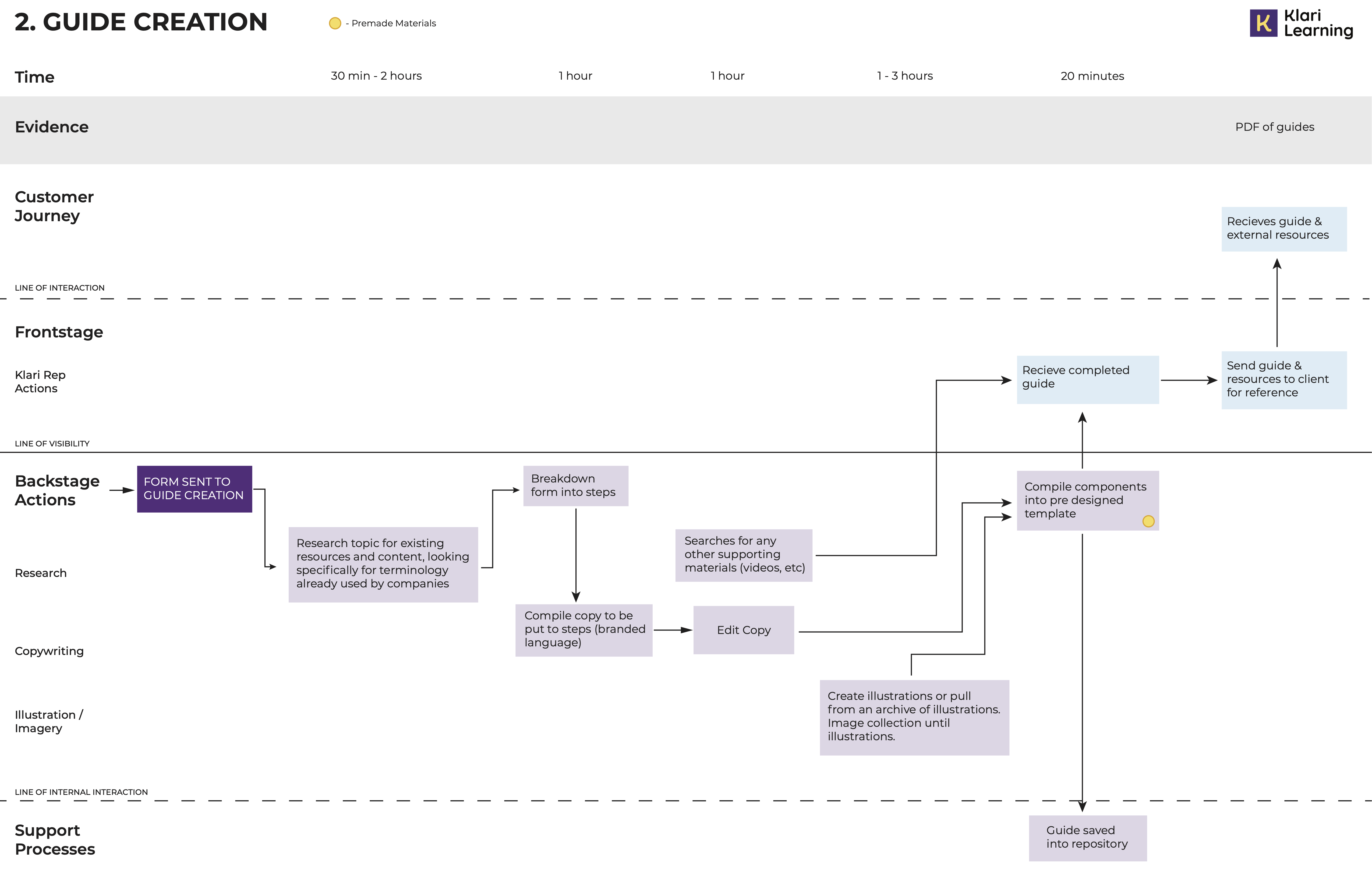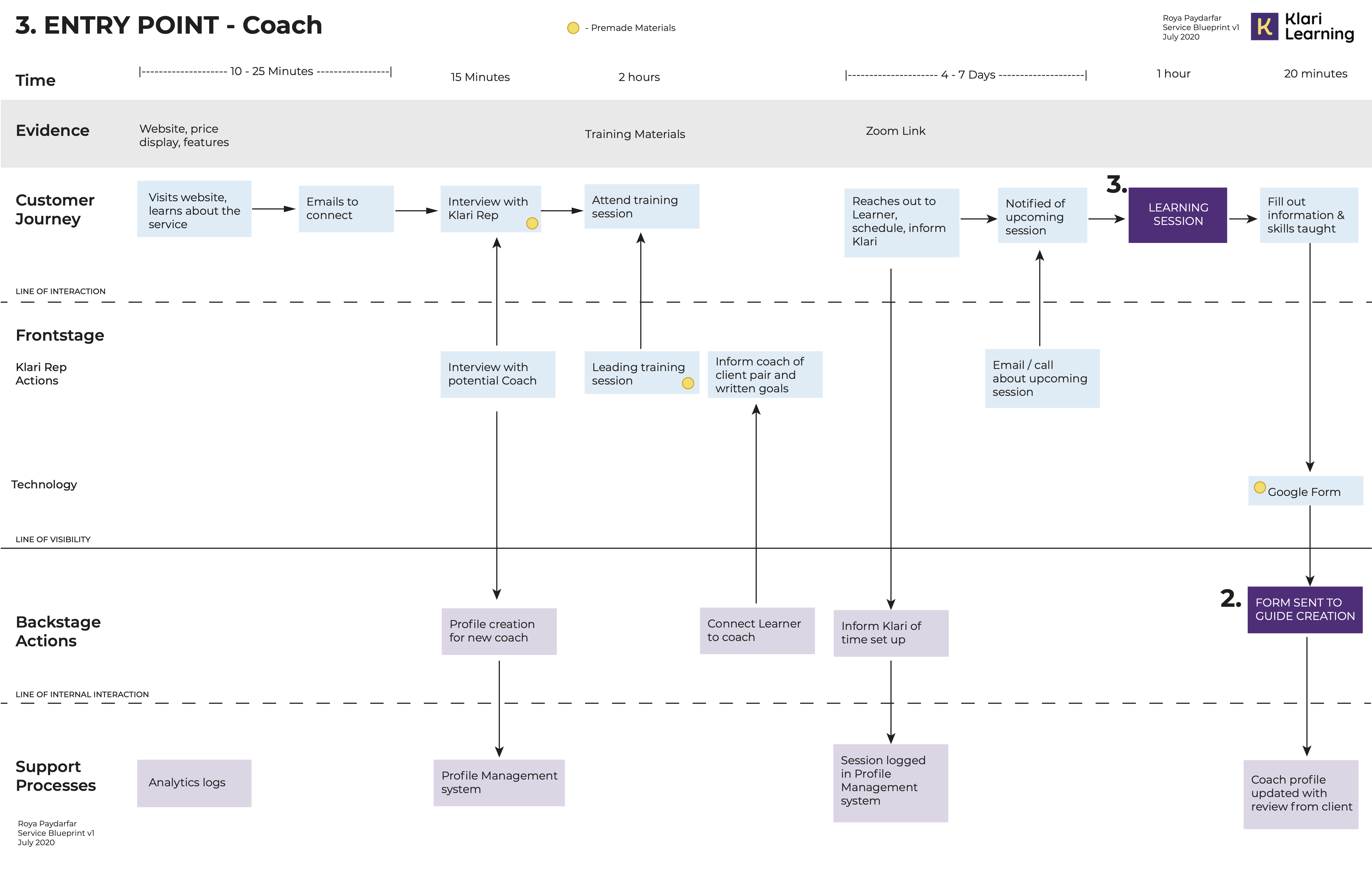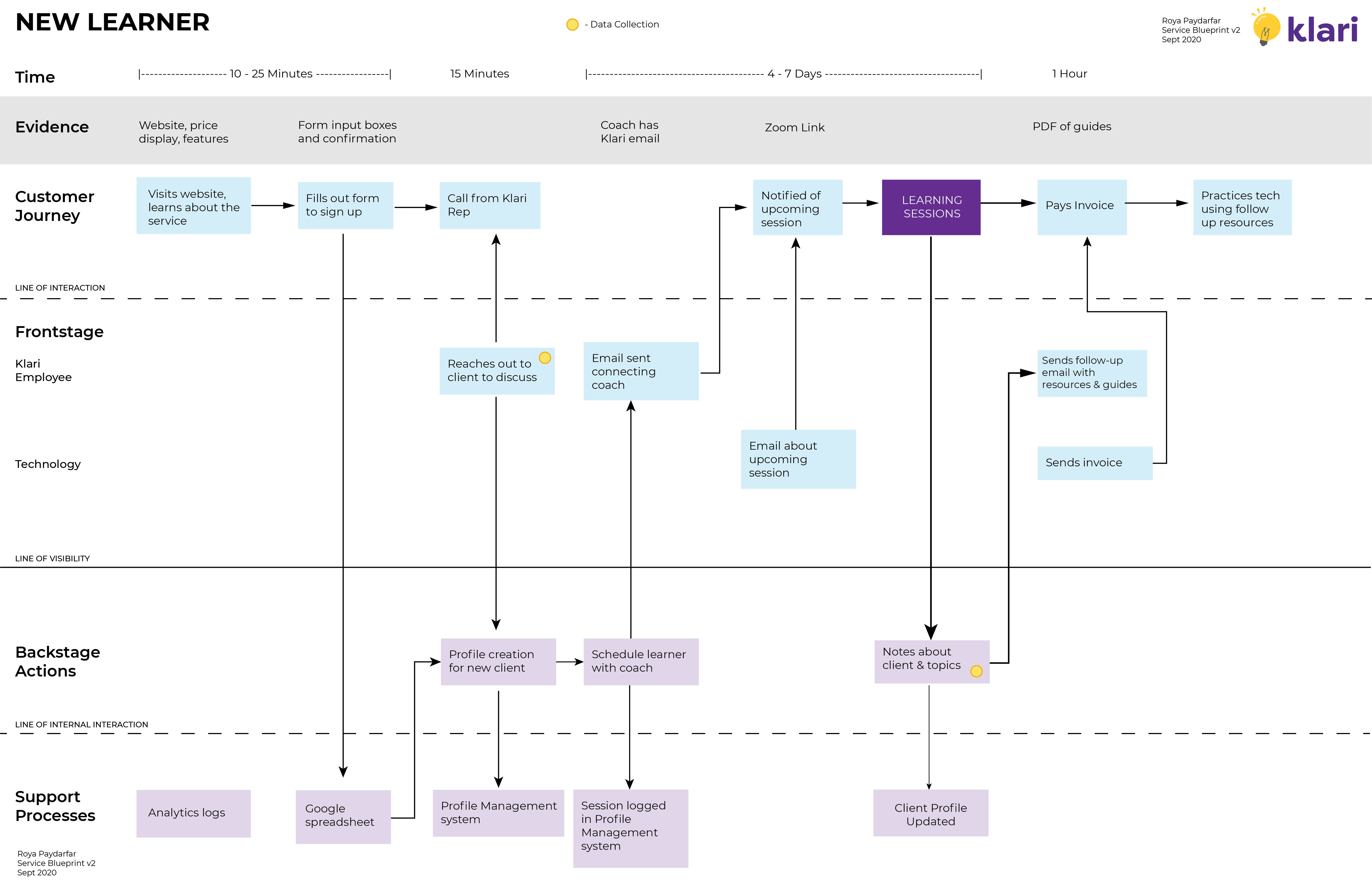Klari Learning
Connecting others to become more digitally connected.
In the early days of the pandemic, I noticed the older members of my community experienced difficulty transitioning to a socially distant lifestyle due to the knowledge gap of using their day-to-day technology. I founded Klari Learning to uncover more about the technology literacy gap and explore how design thinking can help create a solution. Beyond design, I worked directly with learners through coaching technology use.
Role: UX Researcher, UX/UI & Service Designer
Timeline: March 2020 - January 2021
Collaborators: Dr. Miso Kim
As new technology continues to emerge and in the era of COVID-19, the need for tech literacy becomes increasingly important. How can entrepreneurship be lead by user research and service design to make tech-learning more accessible?
RESEARCH & DISCOVERY
User Interviews
Total: 16 interviewees
Age: 55-87, mean 78
Gender: 4 male, 12 female
Education: 14 out of 16 M.S. Degrees
Income: Middle to Upper Middle
Retirement status: 14 out of 16 retired
Location: Northeastern United States

An Affinity Map displaying common and overlapping themes from learner pain points.

How Might We cards posing questions drawn from the Affinity Map's themes.
Research Takeaways
User research illuminated the need for technology learning rather than one-time assistance; however, it also displayed how nuanced the emotions are of someone who finds technology use challenging. It was critical to be mindful of the emotional complexities involved in teaching someone rather than doing for someone while moving forward with designs.
MAPPING & SERVICE PROTOTYPE
Service Prototype
Klari's original service functioned as an enhanced peer-to-peer sharing platform. Coaches signed up on a contract basis and worked alongside Klari to tutor tech learning. Coaches would collect information from learning sessions to send back to Klari, who sends follow-up guides for learners' independent practice.
Limitations
Due to COVID-19, Klari had the challenge of figuring out how to teach technology with the boundary of only being able to communicate through technology.
Customer Journey
*Note: Savvy was Klari's placeholder name

The Customer Journey of learners and coaches highlighted the pain points for both.
Service Blueprint & Guides





Version 1 Service Blueprints for 1. A new learner 2. Guide Creation and 3. A new coach (left). Version 1 Guide examples (right).
TESTING
Service Testing
I conducted user tests and feedback sessions to identify any pain points of the service and guides.
Total number of testers: 6
Key pieces of feedback
- Klari learners expressed a sense of uncertainty with the insecurity that comes with a peer-to-peer platform.
"I feel vulnerable when I'm using my computer and want to make sure whoever is teaching me is someone I know and trust."
- Some learners came into lessons with an exact idea of what they wanted to learn, whereas others wanted a more structured plan created for them.
"I sometimes get overwhelmed when trying to think about what I wanted to ask during my lessons. I'm not sure what to ask when I don't know what my devices are capable of."
- The guide creation for individual learners was a time and resource consuming task. We found that most of our learners with specific questions didn't end up referring back to their guides but appreciated knowing the information was easily accessible if they needed it.
"I haven't referred to my guides yet, no. I'm comfortable knowing that the information is there when I need it, but I've found that it's more of a mental crutch."
How I addressed it
- Klari learners are a technologically vulnerable population and it was critical to foster trust between the service and its users. Instead of continuing with contract-based coaches, we onboarded coaches to teach multiple learners and build a relationship with the service.
- About half of our learners attended sessions with specific questions, while the other half were interested in structured learning of technology basics. These customer segments influenced Klari to develop Klari-Made lessons, a package of premade curriculums that go over the fundamentals of their devices or software.
- Learners that attended sessions with specific questions were no longer guaranteed a custom guide; however, coaches sent relevant resources such as YouTube videos, Apple Support articles, and other web pages in a follow-up email for learners to reference.
FINAL SOLUTIONS
Final iterations created a more seamless, compassionate, and enriching experience for learners and coaches. Many learners continued with their Learner Driven sessions, where they attended the Zoom call prepared with a list of questions for coaches to work through with them. Other clients decided to move forward with Klari Made lessons, which allowed coaches to come into each session with the lesson plan ready to go.



The final Service Blueprint offered a more straightforward experience for learners and coaches (left). Final Guide designs updated for legibility and understanding (right).

Klari's website provided more information and the types of lessons offered (above).
TAKEAWAYS
What I learned
Klari was one of the most fulfilling projects I have ever had the pleasure of working on, and I will always be grateful for the individuals I worked with and how much I learned during this process.
- Every research-backed solutions will have unanticipated outcomes during testing.
- How to teach and communicate with compassion and de-escalate moments of frustration or high emotion.
- Listening is invaluable, especially when trying to understand complex problems.
- The power of accessibility in my own UX/UI work. Technology is a tool meant to connect everyone, no matter their age, ability, or understanding.
What I would do differently
Working on Klari during the early months of the pandemic came with many limitations, all due to social distancing regulations. Especially with technology, many learners need to accomplish a task by themself to remember. Coaches couldn't be by learners' side for support, which made retaining lessons more challenging. I would have loved to see Klari's outcome as a hybrid model.
Klari was also unable to collaborate with community centers or libraries, which were closed during this time. I would have loved to find ways to partner with institutions where potential learners had a pre-established level of trust.
Hey again! You've hit rock bottom... of this page ☺
If you want to learn more about me, what I'm working on, or what I'm up to, feel free to reach out!